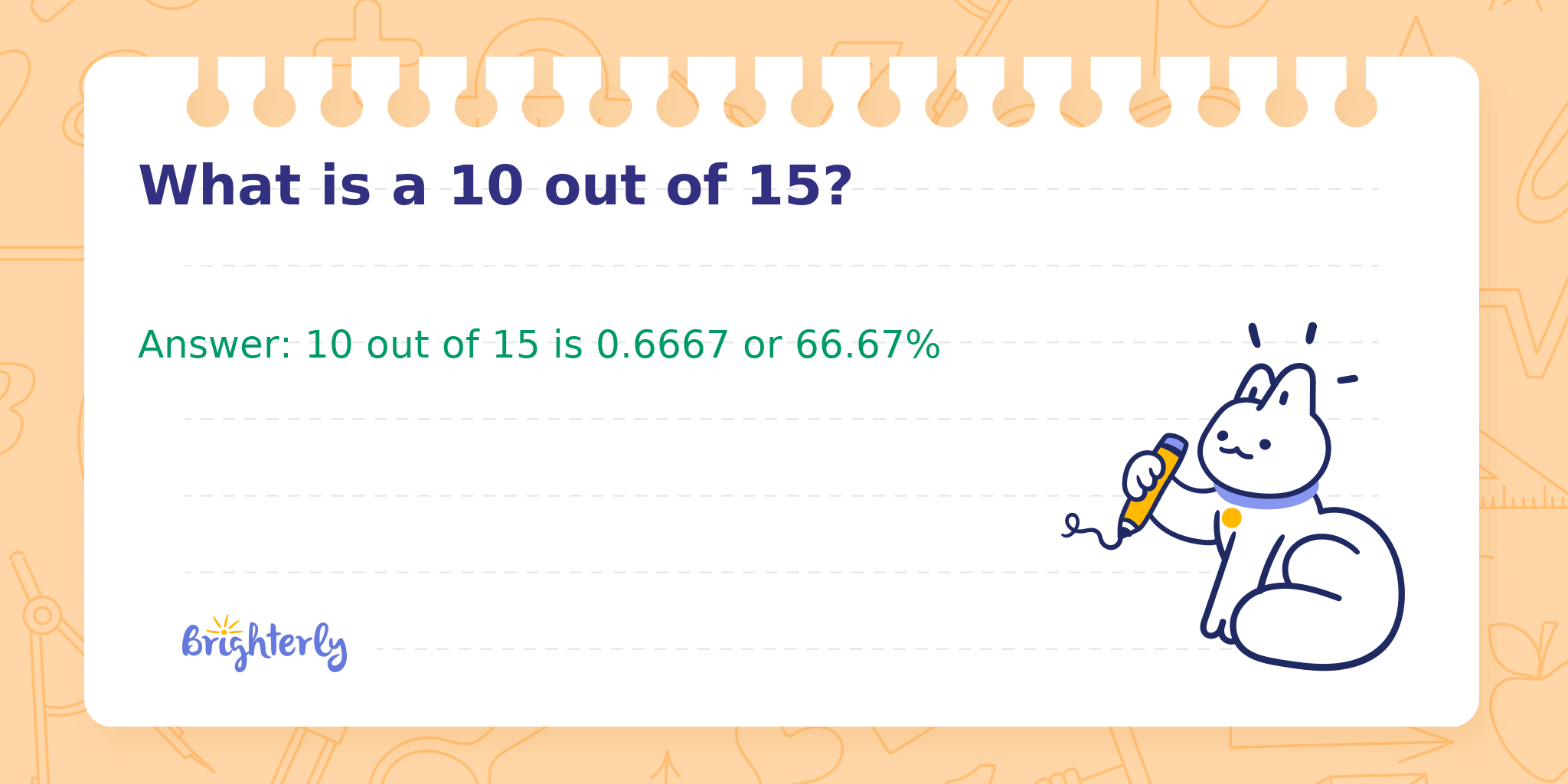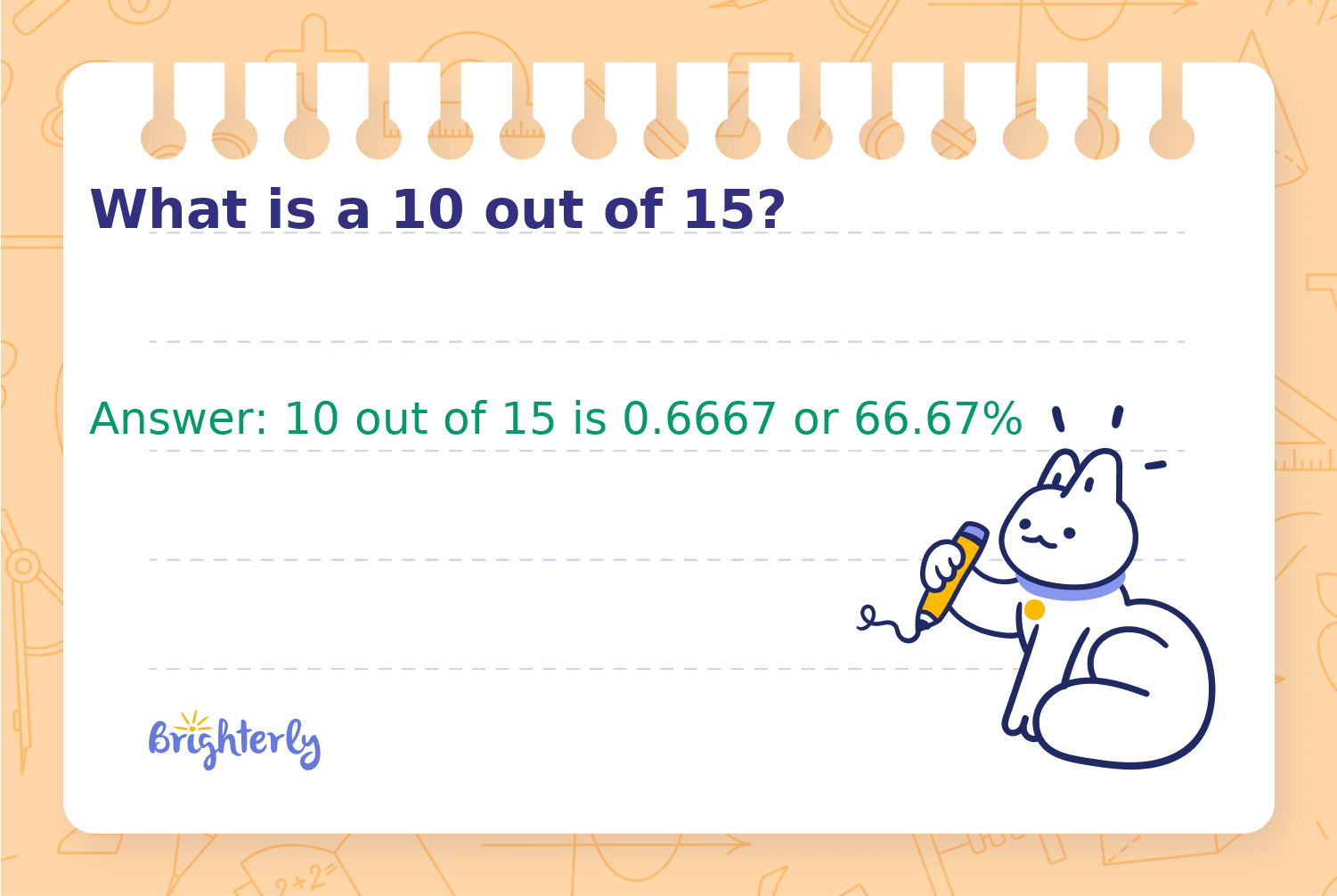
Reviewed by Maila Caliao
What is a 10 out of 15?
Answer: 10 out of 15 is 0.6667 or 66.67%
The question 'What is a 10 out of 15?' typically asks you to express the fraction 10/15 in other forms, such as a decimal or a percentage. Converting fractions to decimals and percentages is a fundamental math skill that helps you compare values and understand results in different formats.
Methods
Math Tutor Explanation Using the Division Method
Converting 10 out of 15 to a decimal involves dividing the numerator (10) by the denominator (15).
Step 1: Step 1: Divide 10 by 15
Step 2: Step 2: 10 ÷ 15 = 0.6667
Math Tutor Explanation Using the Percentage Method
To find out what 10 out of 15 is as a percentage, first divide 10 by 15, then multiply by 100.
Step 1: Step 1: Divide 10 by 15 to get 0.6667
Step 2: Step 2: Multiply 0.6667 by 100 to get 66.67%
Math Tutor Explanation Using Simplification
Simplify the fraction if possible to make calculations easier or to understand its relations to other numbers.
Step 1: Step 1: Find the greatest common divisor (GCD) for 10 and 15, which is 5
Step 2: Step 2: Divide both numerator and denominator by 5, so 10 ÷ 5 = 2 and 15 ÷ 5 = 3. The simplified fraction is 2/3
Math Tutor suggests: Practice More Fraction, Decimal, and Percentage Questions
Explore similar questions about finding fractions, decimals, and percentages with these related exercises.
FAQ on Fraction, Decimal, and Percent Conversion
How do I convert any fraction to a decimal?
Divide the numerator by the denominator.
How do I convert a decimal to a percent?
Multiply the decimal by 100 and add a percent sign.
Can all fractions be simplified?
Yes, if the numerator and denominator have a common factor greater than 1.
What is the simplest form of 10/15?
The simplest form is 2/3.
Why do we multiply by 100 to get a percentage?
Percent means 'per hundred,' so we multiply by 100 to find how many parts out of 100 the value represents.


